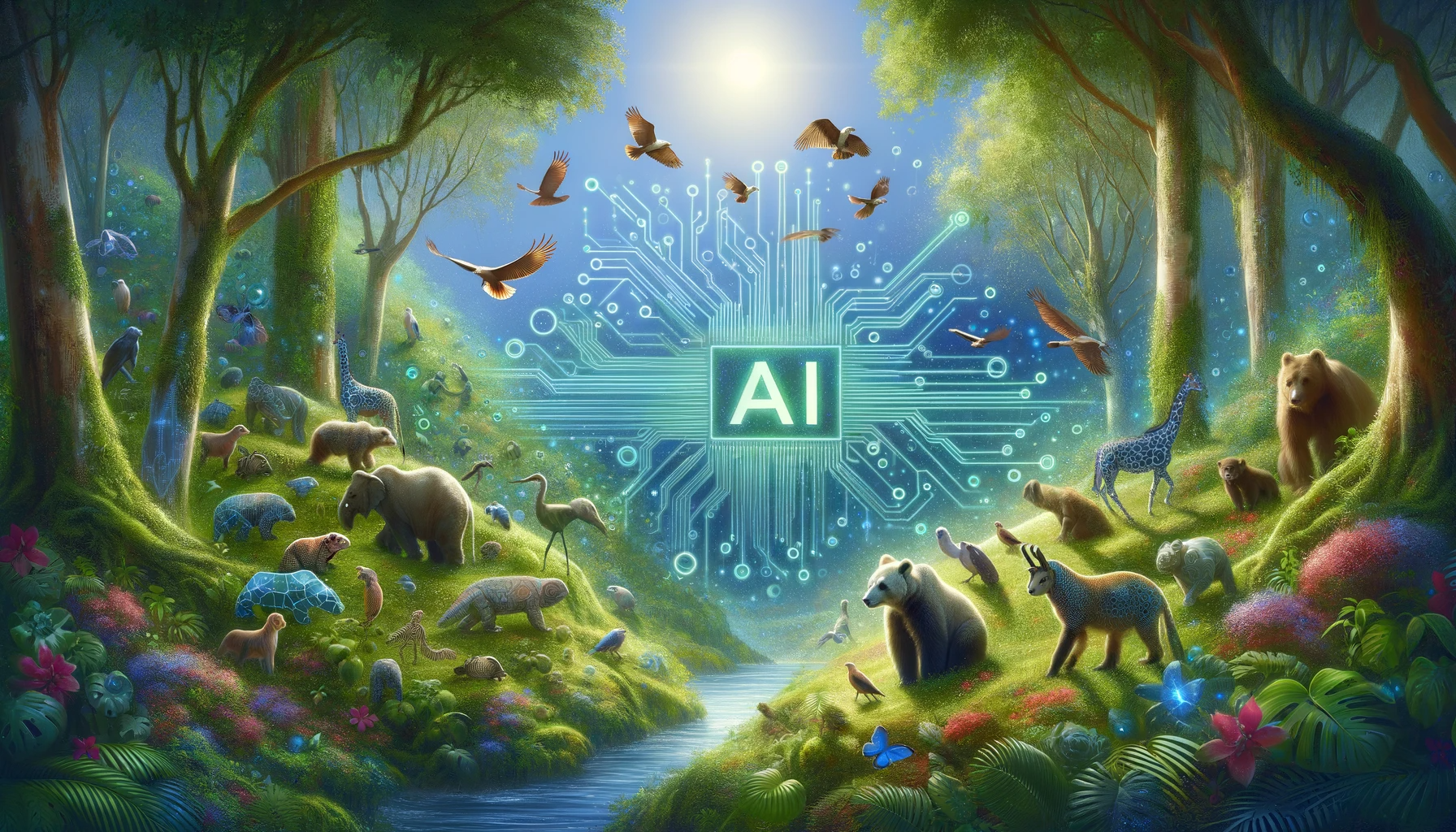The Role of AI in Biodiversity Quantification
Published at Dec 20, 2023

Generated by Dall-E 3
The Role of AI in Biodiversity Quantification: Integrating Human Presence Detection
The conservation and study of biodiversity are increasingly intertwined with the need to understand human impact on natural habitats. Artificial Intelligence (AI) stands at the forefront of this challenge, not only in assessing biodiversity through bioacoustics, acoustic indices, and habitat metrics but also in detecting human presence in these ecosystems. This addition is crucial in measuring anthropogenic effects on wildlife and their habitats.
Bioacoustics: A Symphony of Nature and Human Intrusion
With the latest advancements in AI, it has become increasingly possible to analyze the sounds of nature. From the singing of birds to the croaking of frogs, AI can now detect and analyze these sounds to understand the health of an ecosystem. Additionally, AI can also detect human-made sounds, such as chainsaws or gunshots, which are often associated with illegal logging or poaching activities, allowing for more even more effective conservation efforts. Even outside of illegal activities, AI can detect legitimate human activities, such as the sound of cars or construction, which can be used to understand the impact of urban proximity on wildlife behavior.
Acoustic Indices: Understanding the Anthropophonic Influence
Acoustic indices, which were primarily used to measure the ecological richness of an area, are now also employed to quantify the level of human-generated noise. AI processes these indices to gauge the anthropophonic (human-made noise) impact on natural soundscapes. This data is essential in understanding how human noise pollution affects wildlife, from altering animal communication patterns to influencing breeding and feeding behaviors.
Habitat Metrics: The Human Factor
In analyzing habitat metrics like temperature, humidity, and soil pH, AI now also considers human-induced changes. For instance, AI can detect variations in these metrics caused by urban sprawl, deforestation, or agricultural activities. Understanding these changes is crucial for assessing the resilience of ecosystems to human activities and planning effective conservation strategies.
Vegetation Analysis: Discerning Human Alterations
In vegetation analysis, AI helps in identifying areas where human activities have led to significant changes in vegetation patterns. This includes detecting deforestation, illegal logging, or the encroachment of human settlements. By analyzing satellite and drone imagery, AI provides a comprehensive view of how human presence alters vegetation cover and density, which is essential for sustainable land-use planning.
Human Presence Detection via Audio: A New Frontier
The most recent advancement in AI application in biodiversity is the detection of human presence through audio analysis. This involves identifying specific sound signatures associated with human activities within natural soundscapes. The ability to detect and analyze these sounds is crucial in monitoring protected areas, preventing poaching, and understanding the broader impact of human activities on wildlife.
Conclusion
The role of AI in biodiversity quantification is evolving to include a critical aspect - the detection and analysis of human presence and its impact. This integration provides a more holistic view of ecosystem health and human influence, enabling more informed conservation efforts. As AI continues to advance, its role in balancing human development with the preservation of natural habitats becomes increasingly significant, guiding us towards more sustainable interactions with our environment.
Real-World Applications
Restoration Projects
AI-powered Bioacoustics can be leveraged to measure the impact of restoration projects on biodiversity by detecting and analyzing the presence and richness of wildlife in the area.
National Parks
AI-powered audio monitoring systems are deployed to detect illegal logging or poaching activities by identifying chainsaw noises, gunshots or lumber trucks.
Urban-Adjacent Wilderness
In areas bordering urban settings, AI analyzes audio data to monitor the impact of urban noise pollution on wildlife behavior.
Coastal Regions
AI tools assess the impact of human recreational activities on coastal ecosystems by detecting and analyzing boat engines or human activity sounds.
With these capabilities, AI is not just a tool for understanding nature; it’s becoming an essential ally in safeguarding it against the growing challenges posed by human activities.